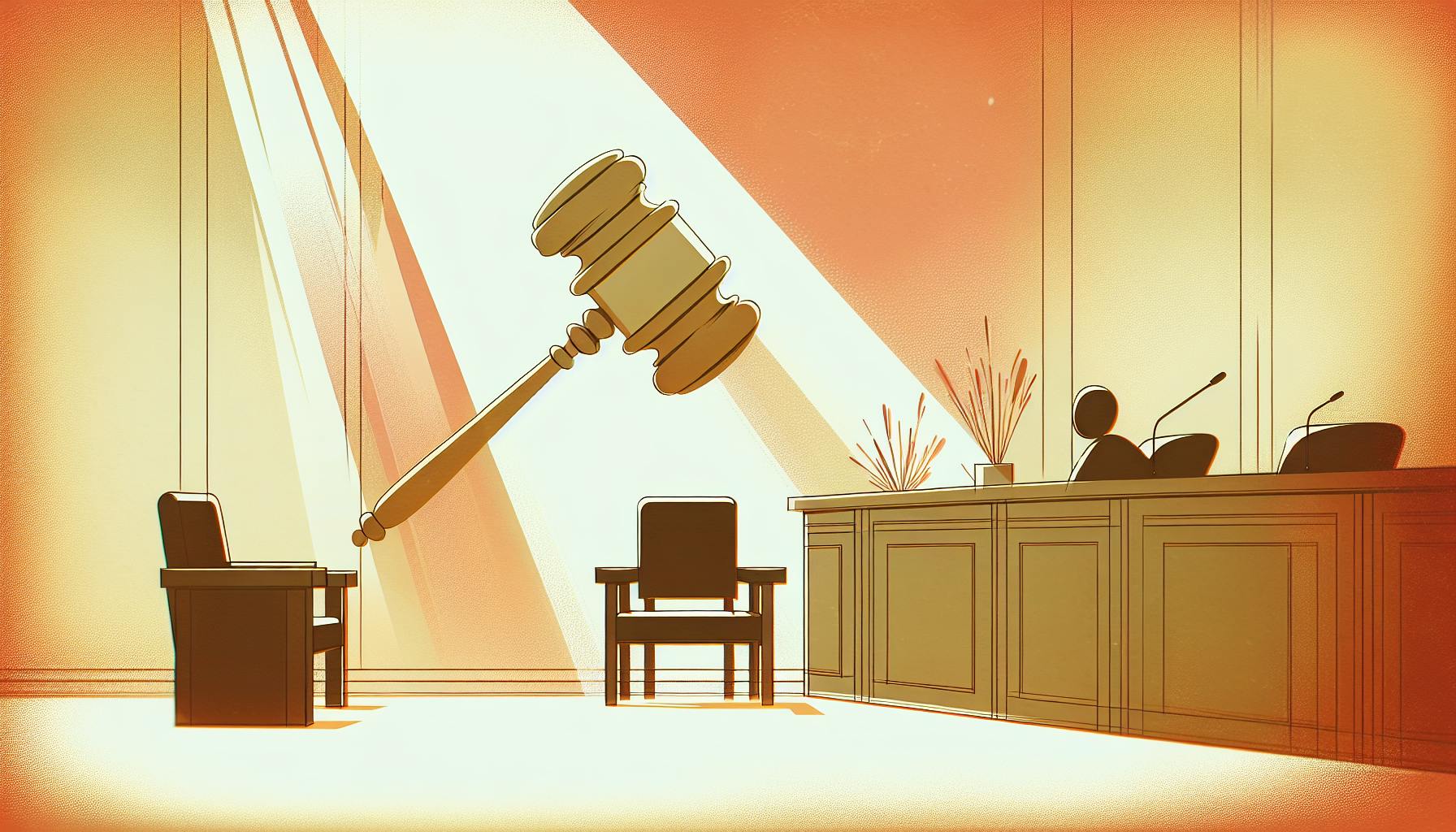Understanding complex legal concepts can be challenging for non-lawyers.
This article clearly explains the meaning of "per incuriam", an important principle in common law that governs how judicial precedents can be overturned.
You'll learn the definition of per incuriam, how it differs from per curiam, examples of its use in case law, and why it matters for upholding legal certainty.
Unveiling Per Incuriam: A Legal Concept Explained
Per incuriam is a Latin legal term meaning "through lack of care." It refers to a court judgement made in ignorance or forgetfulness of a relevant statutory provision, judicial authority, or rule. This section will outline the significance of per incuriam and provide an overview of key aspects related to this concept.
Per Incuriam Meaning: Understanding the Basics
The term "per incuriam" stems from the Latin words "per" meaning through or by, and "incuria" meaning carelessness or lack of skill. In legal contexts, it signifies a judgement passed due to an accidental mistake or oversight, rather than an intentional error.
Specifically, a per incuriam decision occurs when a court overlooks or misinterprets an applicable statute or binding precedent that could have impacted the judgement. Such oversights generally relate to the substantive legal merits rather than procedural technicalities.
The Genesis of Per Incuriam in Common Law
The per incuriam principle originated from the English common law system. It enabled higher courts to overturn judgements made in lower courts that disregarded a statutory provision or binding precedent relevant to the matter at hand.
Over time, this concept was also adopted in other common law jurisdictions like the United States, Canada, Australia etc. It became an established ground for appealing judgements containing an error arising out of ignorance of law.
Per Incuriam Judgement Meaning and Scope
A per incuriam judgement specifically refers to a court decision that fails to properly apply the relevant law. Such judgements carry less legal weight as precedents since they overlooked significant legal rules and authorities.
However, per incuriam typically does not encompass judgements that intentionally depart from precedents, or constitute developments in understanding the law. It is also narrower in scope than simple legal errors that do not disregard statutes or binding case laws.
Per Curiam Decision vs. Per Incuriam: Distinguishing the Terms
While often confused, per curiam decisions differ from per incuriam judgements. A per curiam decision is a ruling delivered collectively by the court or panel of judges. It may or may not elaborate the court's reasoning.
In contrast, a per incuriam judgement contains an accidental oversight of pertinent legal provisions. Hence, not all per curiam decisions can be considered per incuriam. The latter requires demonstrating the court's ignorance or forgetfulness of relevant law.
In summary, per incuriam is an established common law principle allowing the overturning of judgements made in ignorance of binding legal authorities. Understanding its meaning and scope is key for legal professionals.
What does per Curiam mean in law?
Per Curiam refers to a legal opinion issued by an appellate court that is made in the name of the court rather than specifying the name of the judge who authored it.
The term comes from Latin and literally translates to "by the court". It indicates that the opinion represents the views of the entire panel of judges on a case, rather than just one judge.
Some key things to know about Per Curiam opinions:
-
They allow a court to speak with one voice on a matter, rather than emphasizing individual judges' perspectives. This can give more authority and weight to the court's ruling.
-
Per Curiam opinions tend to be shorter and deal with more straightforward points of law. Cases that establish significant legal precedents are less likely to have Per Curiam opinions.
-
Their use varies widely between courts. Some courts issue them frequently for routine cases, while others rarely or never use them.
So in summary, a Per Curiam ruling comes from an appellate court as a whole when judges unanimously agree on the judgement and do not deem it necessary to attribute authorship to any specific judge. It allows the court to present a unified position on the law.
What is an example of a Per Curiam decision?
Per Curiam opinions are written "by the Court" anonymously without an individual author. One of the most well-known examples of a per curiam opinion is the Supreme Court case Bush v. Gore, which resolved the disputed 2000 presidential election.
In Bush v. Gore, the Supreme Court issued an unsigned per curiam opinion that reversed and remanded the Florida Supreme Court's order for a statewide recount in the 2000 presidential election. The per curiam opinion held that the recount procedures ordered by the Florida Supreme Court violated the Equal Protection Clause of the Fourteenth Amendment.
This landmark decision effectively ended the legal battle over Florida's electoral votes in the razor-thin 2000 election, securing George W. Bush's victory over Al Gore. As an unsigned opinion from the Court as a whole, it carried significant weight and demonstrated the urgency and gravity of the situation.
The per curiam ruling in Bush v. Gore stands out for its enormous political and historical consequences in deciding the outcome of a presidential election. It exemplifies how per curiam decisions can wield substantial influence in shaping legal precedent and resolving major disputes, despite lacking a single named author.
What is the concept of precedent?
Precedent refers to a previous court decision that serves as an authority for deciding future cases involving similar legal issues or facts. The doctrine of stare decisis requires courts to follow precedents established by higher courts within the same jurisdiction.
Precedent relies on the principle of stare decisis, which means "to stand by things decided". This doctrine requires courts to apply the legal principles set down in previously decided cases to new situations involving similar facts or issues.
Some key things to know about precedent:
-
Precedent provides consistency and predictability in the law. When courts follow precedent, it makes the law more stable and reliable.
-
Higher courts set precedent that must be followed by lower courts within the same jurisdiction. For example, a state Supreme Court sets precedent that all lower state courts must adhere to.
-
Precedents can be overruled, but usually only by the court that set the precedent or by an even higher court. Overruling precedent is rare as courts give high deference to existing case law.
-
Precedent applies when the material facts and issues in a new case are substantially similar to those in a precedent case. If the facts differ significantly, the precedent may not control.
So in summary, precedent refers to previously decided court rulings that shape how future cases on similar matters will be decided. The concept relies on courts respecting and upholding prior relevant case law through the doctrine of stare decisis. This makes the law more predictable, consistent, and fair.
sbb-itb-585a0bc
What does stare decisis mean in law?
Stare decisis is a Latin phrase that means "to stand by things decided." It refers to the legal principle that courts should follow precedents - that is, prior case law and legal decisions - when making a ruling on a similar case.
Here are some key things to know about stare decisis:
-
Stare decisis provides consistency and predictability in the law. When courts follow precedent, it makes the law more settled and certain. People can predict legal outcomes.
-
The doctrine applies vertically and horizontally. Vertical stare decisis means lower courts must follow precedents set by higher courts in their jurisdiction. Horizontal stare decisis means courts must follow their own past decisions.
-
Stare decisis is not absolute. Courts can overturn precedents, but require special justification. Reasons might include the precedent being outdated or wrongly decided. Overturning long-held precedent is rare.
-
The principle traces back centuries in common law systems. It has roots in medieval England. The rationale is that similar cases should reach similar results based on past reasonings.
So in short, stare decisis is a foundational common law principle guiding courts to stand by prior rulings when deciding new cases. It enables consistency, stability and predictability in law. But it is also flexible enough to allow change when seriously warranted.
Per Incuriam in Action: Identifying Erroneous Judgements
Per incuriam is a legal principle that allows appellate courts to overturn previous court judgements that were decided erroneously or in ignorance of a binding authority or legislation. Identifying per incuriam errors in lower court decisions is an important part of civil procedure and the appellate process.
Per Incuriam Example: Case Studies from the Courts
There are several real-world examples of the per incuriam principle being invoked to challenge court judgements:
-
In the 2000 case Bush v. Gore, the U.S. Supreme Court decision regarding the Florida recount in the 2000 presidential election was criticized by some legal experts as potentially being per incuriam because it failed to cite and potentially went against previous election law precedents. However, the Supreme Court itself did not overturn the decision.
-
In a 2007 case in the England and Wales Court of Appeal, it was ruled that a previous civil judgement was per incuriam because the judge had ignored a relevant statute that contradicted the basis for his decision. The Court of Appeal overturned the erroneous lower court judgement.
-
A 2020 Canadian Supreme Court case overturned a provincial court judgement using the per incuriam principle, finding that the lower court had improperly ignored binding legal precedents in the relevant area of law in making their decision.
The Role of Appellate Courts in Rectifying Per Incuriam
Appellate courts like Courts of Appeals and Supreme Courts serve a key function in identifying and overturning per incuriam judgements from lower courts that ignored binding precedents or legislation. They help uphold rule of law principles.
Usually, it is up to the appealing party to specifically plead that the previous court decision was per incuriam and clearly demonstrate how binding authorities were ignored. The appellate judges can then assess if an error was indeed made.
Overturning decisions adds time and cost, so appellate courts are careful in applying per incuriam. But it maintains integrity.
Per Incuriam Judgement Supreme Court Reversals
There have been several instances of the U.S. Supreme Court reversing lower federal and state court decisions after finding they were per incuriam:
-
In Hohn v. United States (1998), the Supreme Court ruled 8-1 that a lower court decision made per incuriam by ignoring clear statutory language and Supreme Court precedents on when appeals can be made.
-
Halliburton Co. v. Erica P. John Fund, Inc. (2014) unanimously reversed and remanded a lower court ruling that contradicted precedents on securities class action requirements.
-
Several Supreme Court decisions have overturned lower court immigration judgements made per incuriam by ignoring precedents on asylum applicant credibility assessments.
Civil Procedure and Per Incuriam: Navigating Errors
Within civil procedure rules, parties can plead per incuriam to identify improper judgements. But the appeals process has strict deadlines and guidelines.
Courts also limit per incuriam claims only to failures to consider binding precedent, not just cases where parties allege the decision was generally "wrong". And claims normally must target the judgement itself rather than the reasoning process.
Per incuriam provides discipline but can cause conflicts. Continuing education helps judges avoid oversights. Streamlined computerized legal research also now reduces mistakes in applying precedents.
The Legal Framework Surrounding Per Incuriam
Per incuriam is a Latin legal term meaning "through lack of care." It refers to a judgement passed by a court that has failed to observe a binding precedent or statutory provision.
Stare Decisis and the Per Incuriam Rule
The doctrine of stare decisis requires courts to follow previously decided judgements or precedents. However, courts can depart from following previous decisions if they were decided per incuriam. In other words, if a precedent failed to consider a binding authority or relevant statute, the court is not required to follow the flawed precedent under the per incuriam exception.
This per incuriam rule allows courts flexibility to correct substantive mistakes in precedent while still maintaining the principle of stare decisis. It balances the need for consistency with the need for legal accuracy.
The Court's Appellate Jurisdiction and Per Incuriam
A court's appellate jurisdiction determines its ability to review and potentially overturn decisions made by lower courts. Appellate courts can utilize their jurisdiction to identify and remedy per incuriam judgements from inferior courts.
For example, the Court of Appeal in England and Wales frequently hears appeals claiming earlier decisions were made per incuriam. The Court then examines if an error of law was made by the lower court in failing to properly apply precedent or statutory code.
Judicial Precedent and Avoiding Per Incuriam Mistakes
Judges establishing binding precedent must be careful not to create judgements per incuriam. Strategies to avoid per incuriam mistakes include:
- Thoroughly researching case law to identify relevant precedents
- Closely studying statutory code provisions applicable to the case
- Issuing written judgements with well-reasoned arguments anchored in existing law
- Inviting submissions from multiple parties highlighting key authorities
- Conferring with other judges when unsure of certain areas of law
Applying these considerations when writing judgements can help prevent flawed decisions made per incuriam.
The Impact of Per Incuriam on Legal Certainty
The per incuriam exception does create some uncertainty regarding the future viability of legal precedents. Since courts are not bound to follow decisions found to be per incuriam, this makes the long-term precedential value of some case law unclear.
However, per incuriam strengthens confidence in the judicial system by providing a mechanism to overturn poorly reasoned judgements. It balances the competing needs for consistency and accuracy in law. With careful, well-researched legal analysis by courts, instances of per incuriam can be minimized to promote greater public faith in the justice system.
Controversies and Debates Over Per Incuriam
Per incuriam is a complex legal concept that has sparked much debate within the legal community. On one hand, it serves an important function - allowing judges to overturn decisions made in error or without full consideration of binding authorities. However, critics argue it can also undermine judicial precedent and authority if overapplied. This section examines some of the key controversies surrounding per incuriam.
Critiquing the Per Incuriam Principle
While most agree per incuriam has validity in certain circumstances, there is disagreement over its appropriate scope and usage. Some argue the doctrine is applied too broadly:
- Concerns that almost any decision could be classified as made "per incuriam", leading to legal uncertainty
- Fears that overuse of per incuriam could diminish respect for binding precedent
- Arguments that the doctrine may enable some judges to overturn decisions they simply disagree with on ideological grounds
Defenders counter that clear guidelines on applying per incuriam prevent misuse. They also highlight the need for an error-correcting mechanism when truly egregious mistakes are made. However, determining what constitutes an "egregious mistake" remains subjective.
Famous Dissents: When Judges Disagree on Per Incuriam
Judges sometimes disagree on whether a past decision qualifies as per incuriam. Famous examples include:
- Bush v. Gore: The dissent argued the majority ignored binding precedent on Equal Protection rights issues. The majority denied violating the per incuriam principle.
- R v Horncastle: Judge said earlier cases limiting hearsay evidence were decided per incuriam. The Supreme Court later overturned this finding.
Such splits illustrate the complexity around identifying per incuriam cases. They also demonstrate how accusations of per incuriam breaches can form part of broader judicial disputes.
The Role of the House of Lords and King's Bench in Shaping Per Incuriam
As Britain's highest courts for centuries, the House of Lords and King's Bench played an important role in developing per incuriam custom.
Notable examples include:
- Morelle Ltd. v Wakeling (House of Lords 1955), an early defining case on modern per incuriam principles.
- Birmingham City Council v Oakley (King's Bench 1979), an influential case on applying per incuriam to overturn precedent.
Later courts continue referring back to early House of Lords and King's Bench decisions to determine how per incuriam should be applied. This demonstrates the lasting impact of their rulings.
Balancing Judicial Authority and the Per Incuriam Doctrine
A core tension exists between maintaining judicial authority and allowing errors to be corrected via per incuriam:
- Overturning decisions through per incuriam could encourage appeals and diminish public trust in courts
- However, courts need an error-correction mechanism for clearly incorrect judgements
There are good-faith arguments on both sides. The legal community continues debating how to best balance these factors when applying the per incuriam rule.
Conclusion: The Essence of Per Incuriam in Modern Jurisprudence
Per incuriam plays an important role in maintaining the integrity of judicial precedent. However, its application also presents challenges that must be carefully considered.
Recapitulating Per Incuriam's Role in Judicial Precedent
-
Per incuriam allows appellate courts to overturn previous decisions that were made in error or without full consideration of binding authorities. This helps uphold the consistency of case law.
-
However, per incuriam should be applied judiciously to balance legal certainty with flexibility. Overuse risks undermining the authority of judicial precedent.
Final Thoughts on the Future of Per Incuriam
-
Per incuriam will likely continue evolving to address new complexities in the legal system. Appellate courts may expand or restrict its application based on policy goals.
-
More dialogue is needed on balancing per incuriam with principles of stare decisis and judicial restraint. This can help strike the right balance between upholding past rulings and correcting clear errors.


